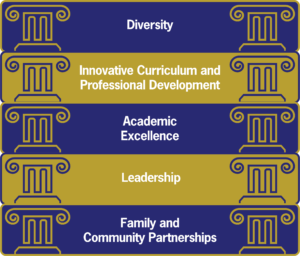What are Magnet Schools
The single largest form of public school “choice,” magnet schools are visionary, innovative and open to all students regardless of zip code. With 4,340 schools educating 3.5 million+ students nationwide, each school typically focuses on individually themed curricula.
The educational themes that some magnet schools focus on include,
- Science, Technology, Engineering, and Mathematics (STEM)
- Fine and Performing Arts
- International Baccalaureate, International Studies
- Career and Technical Education (CTE) and
- World Languages (immersion and non-immersion)
Magnet Schools attract children of various socio-economic backgrounds and academic achievement levels. They are free and open to anyone; due to high demand, most schools determine student acceptance by a lottery system. Magnet schools are accountable to state standards and, in many cases, exceed those standards.
See the Magnet Schools of America Strategic Roadmap, which discusses magnet school opportunities at local, state and federal levels.
However, it is the skills of teamwork, acceptance, innovation and engagement that make magnet schools a vibrant environment for developing positive citizen children prepared for future careers and successful community engagement. This real-life preparation has students not only interacting with peers from all backgrounds, but with hands-on experience working with businesses, cultural institutions, universities and community organizations.


 Magnet Schools are founded on the five pillars of diversity, innovative curriculum and professional development, academic excellence, leadership and family and community partnerships. The synergistic relationship of these five equally held tenets is not merely a foundation, but a compass moving our students/children forward to a well prepared future.
Magnet Schools are founded on the five pillars of diversity, innovative curriculum and professional development, academic excellence, leadership and family and community partnerships. The synergistic relationship of these five equally held tenets is not merely a foundation, but a compass moving our students/children forward to a well prepared future.

